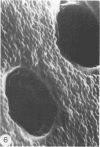Abstract
Strong adherence of bacteria, yeast, erythrocytes, leukocytes, platelets, spores, and polystyrene spheres to membrane filter materials was noted during filtration through membranes with pore size diameters much larger than the particles themselves. Quantitative recovery on the membrane filters of these particles from low-concentration suspensions was achieved during gravity- or vacuum-assisted filtration through membranes with pore diameters as much as 30 times that of the filtered particles. Mechanical sieving was not responsible. The phenomenon was judged to be electrostatic. It could be partially blocked by pretreating the filter with a nonionic surfactant (Tween 20), and elution of adherent particles was achieved with 0.05% Tween 20. Gram-positive cocci were removed from suspension more efficiently than gram-negative rods. The commonly used cellulose membranes adsorbed more bacteria, blood cells, and other particles than did polycarbonate filters. Of lesser adsorptive capacity were vinyl acetate, nylon, acrylic, and Teflon membranes. Backwashing with saline, serum, 6% NaCl, dextran solutions, or phosphate buffers of varying molality and pH removed only a fraction of adherent particles. Tween 20 (0.05%) eluted up to 45% of adherent particles in a single back-filtration. Selected filters quantitatively removed the particles tested, which then could be washed and subjected to reagents for a variety of purposes. It is important to anticipate the removal of particles during membrane filtration, since it is not a simple mechanical event.
Full text
PDF

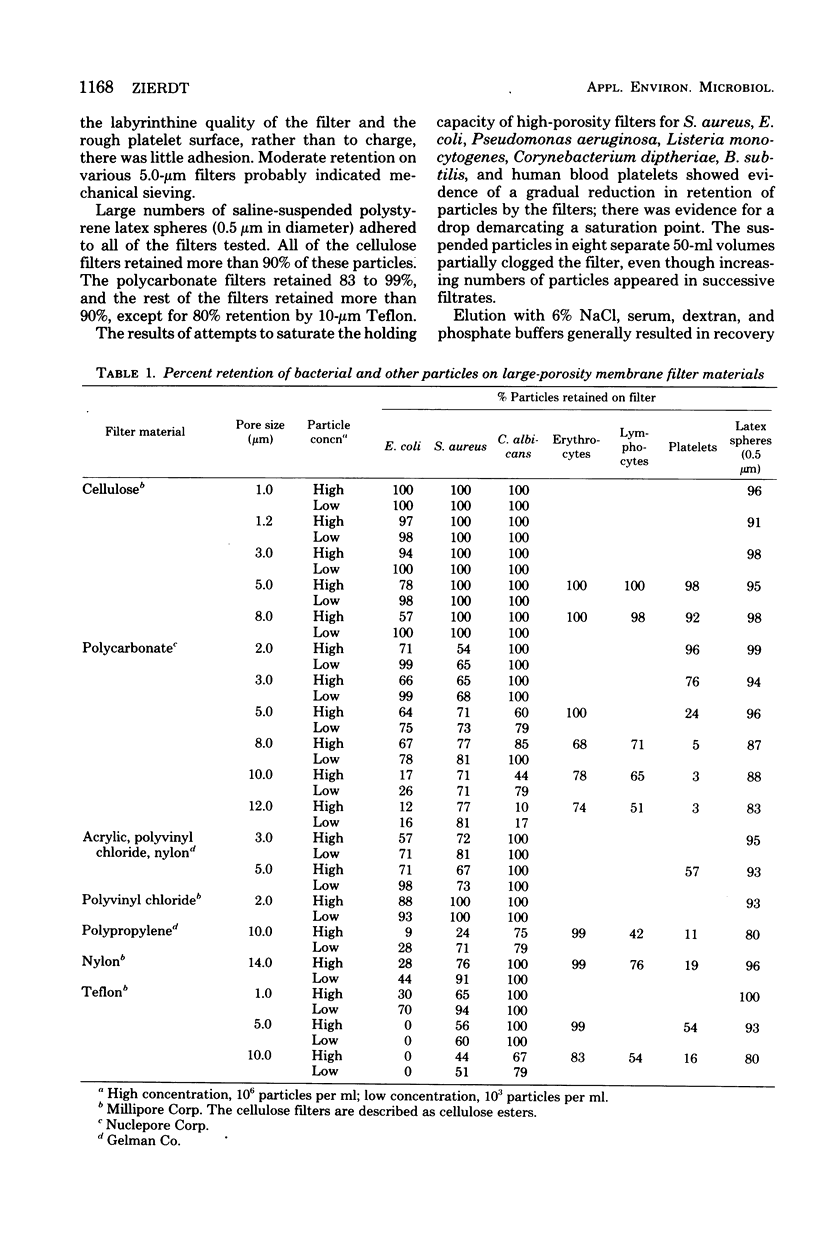
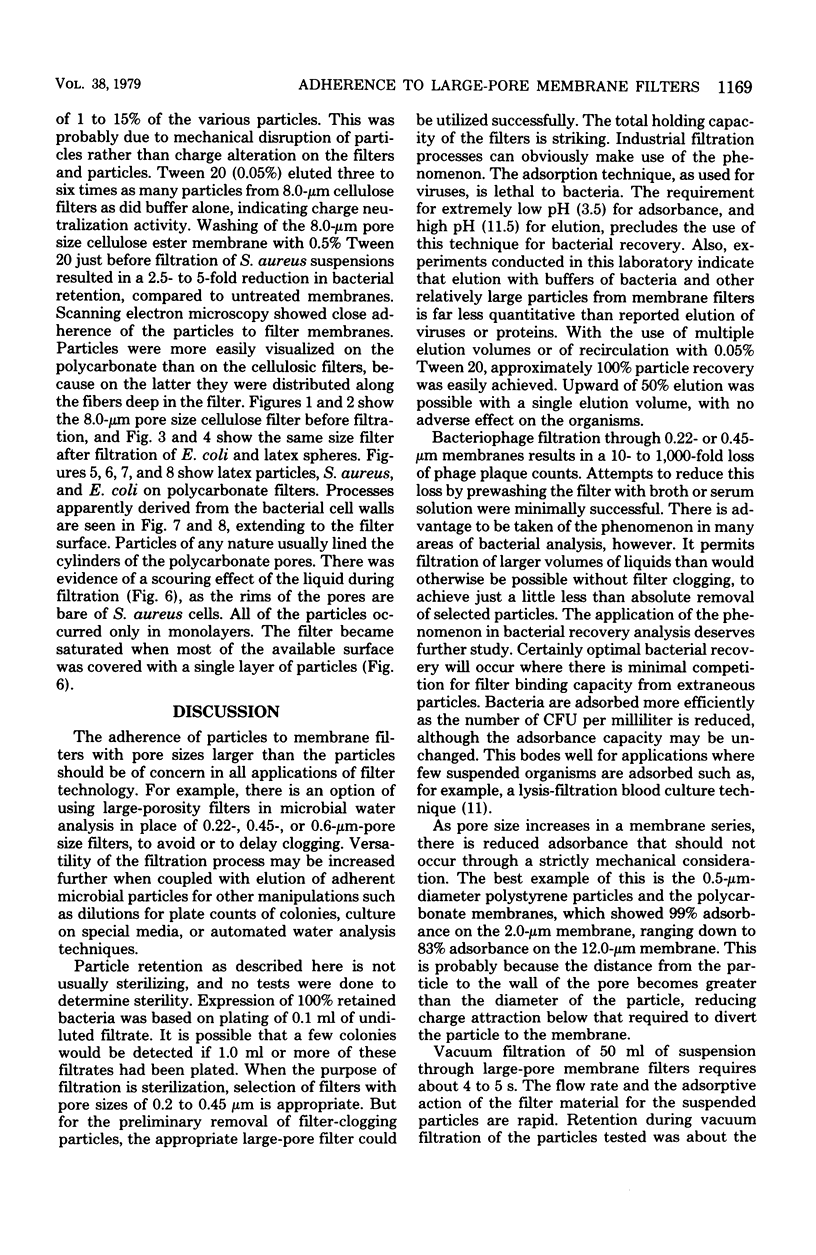
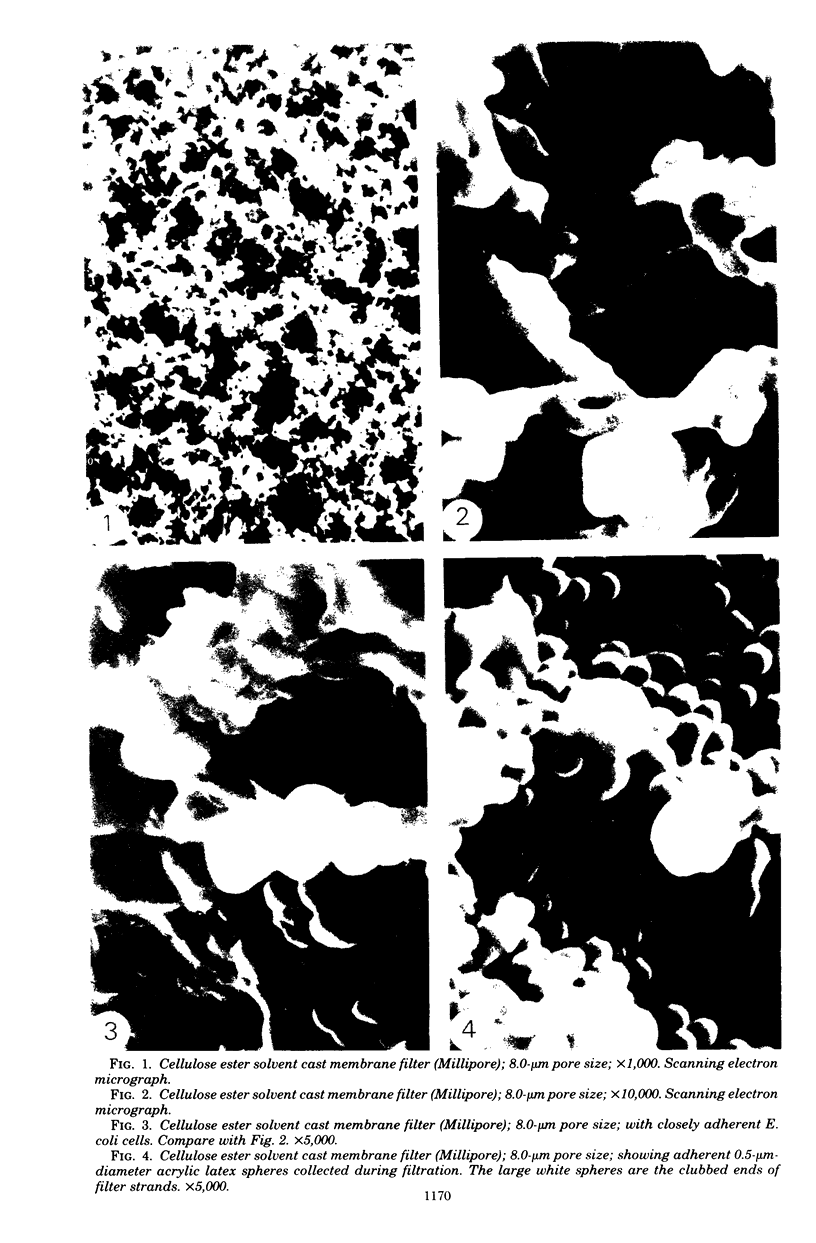
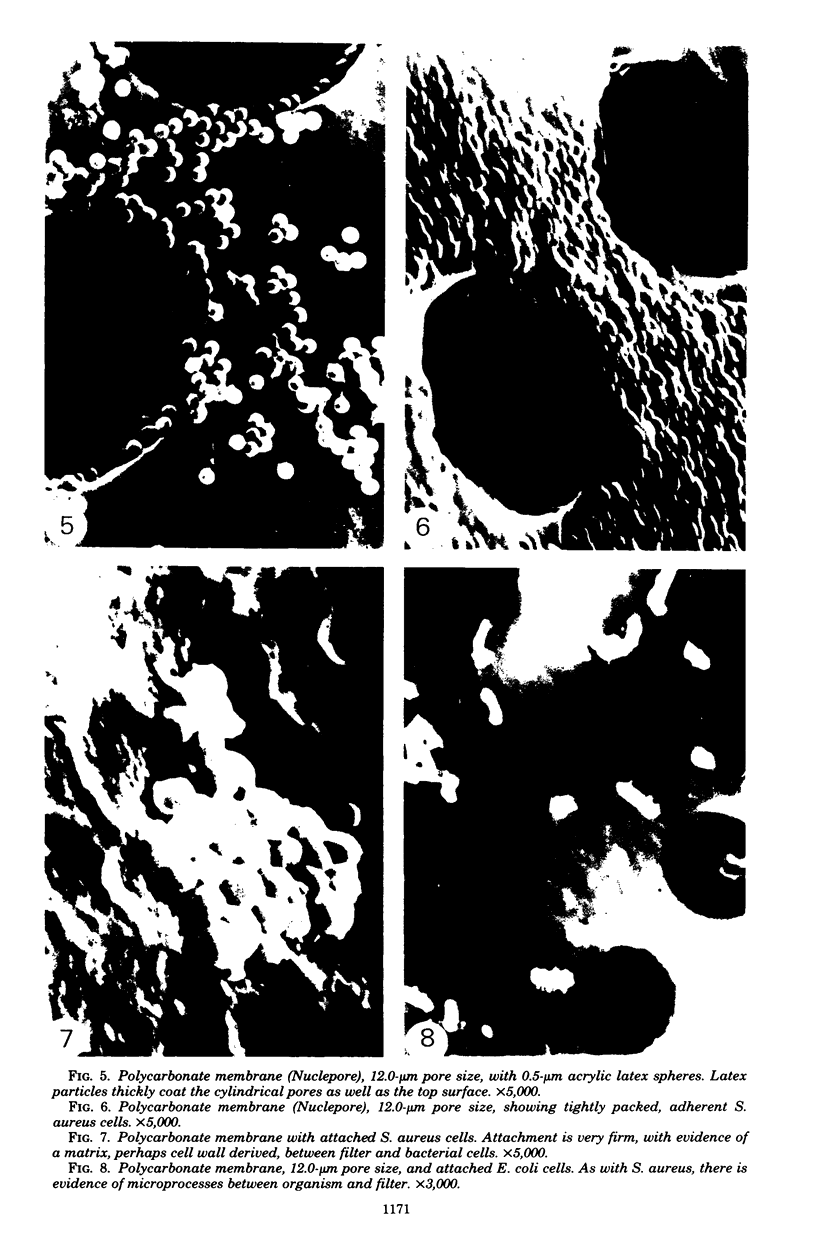
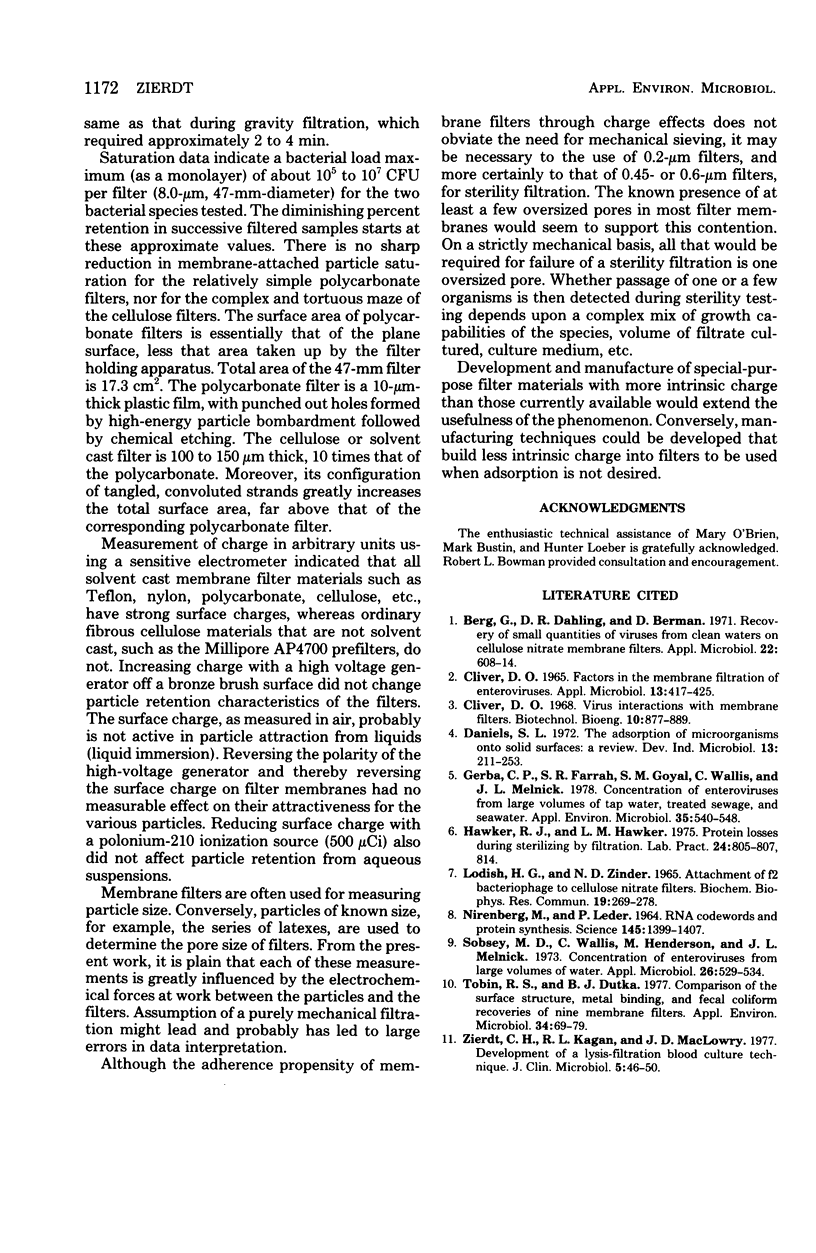
Images in this article
Selected References
These references are in PubMed. This may not be the complete list of references from this article.
- Berg G., Dahling D. R., Berman D. Recovery of small quantities of viruses from clean waters on cellulose nitrate membrane filters. Appl Microbiol. 1971 Oct;22(4):608–614. doi: 10.1128/am.22.4.608-614.1971. [DOI] [PMC free article] [PubMed] [Google Scholar]
- CLIVER D. O. FACTORS IN THE MEMBRANE FILTRATION OF ENTEROVIRUSES. Appl Microbiol. 1965 May;13:417–431. doi: 10.1128/am.13.3.417-425.1965. [DOI] [PMC free article] [PubMed] [Google Scholar]
- Gerba C. P., Farrah S. R., Goyal S. M., Wallis C., Melnick J. L. Concentration of enteroviruses from large volumes of tap water, treated sewage, and seawater. Appl Environ Microbiol. 1978 Mar;35(3):540–548. doi: 10.1128/aem.35.3.540-548.1978. [DOI] [PMC free article] [PubMed] [Google Scholar]
- Hawker R. J., Hawker L. M. Protein losses during sterilizing by filtration. Lab Pract. 1975 Dec;24(12):805-7, 818. [PubMed] [Google Scholar]
- LODISH H. F., ZINDER N. D. ATTACHMENT OF F2 BACTERIOPHAGE TO CELLULOSE NITRATE FILTERS. Biochem Biophys Res Commun. 1965 Apr 23;19:269–278. doi: 10.1016/0006-291x(65)90453-5. [DOI] [PubMed] [Google Scholar]
- NIRENBERG M., LEDER P. RNA CODEWORDS AND PROTEIN SYNTHESIS. THE EFFECT OF TRINUCLEOTIDES UPON THE BINDING OF SRNA TO RIBOSOMES. Science. 1964 Sep 25;145(3639):1399–1407. doi: 10.1126/science.145.3639.1399. [DOI] [PubMed] [Google Scholar]
- Sobsey M. D., Wallis C., Henderson M., Melnick J. L. Concentration of enteroviruses from large volumes of water. Appl Microbiol. 1973 Oct;26(4):529–534. doi: 10.1128/am.26.4.529-534.1973. [DOI] [PMC free article] [PubMed] [Google Scholar]
- Tobin R. S., Dutka B. J. Comparison of the surface structure, metal binding, and fecal coliform recoveries of nine membrane filters. Appl Environ Microbiol. 1977 Jul;34(1):69–79. doi: 10.1128/aem.34.1.69-79.1977. [DOI] [PMC free article] [PubMed] [Google Scholar]
- Zierdt C. H., Kagan R. L., MacLowry J. D. Development of a lysis-filtration blood culture technique. J Clin Microbiol. 1977 Jan;5(1):46–50. doi: 10.1128/jcm.5.1.46-50.1977. [DOI] [PMC free article] [PubMed] [Google Scholar]








